Can the Guyana Defense Force Resist a Venezuelan Invasion?
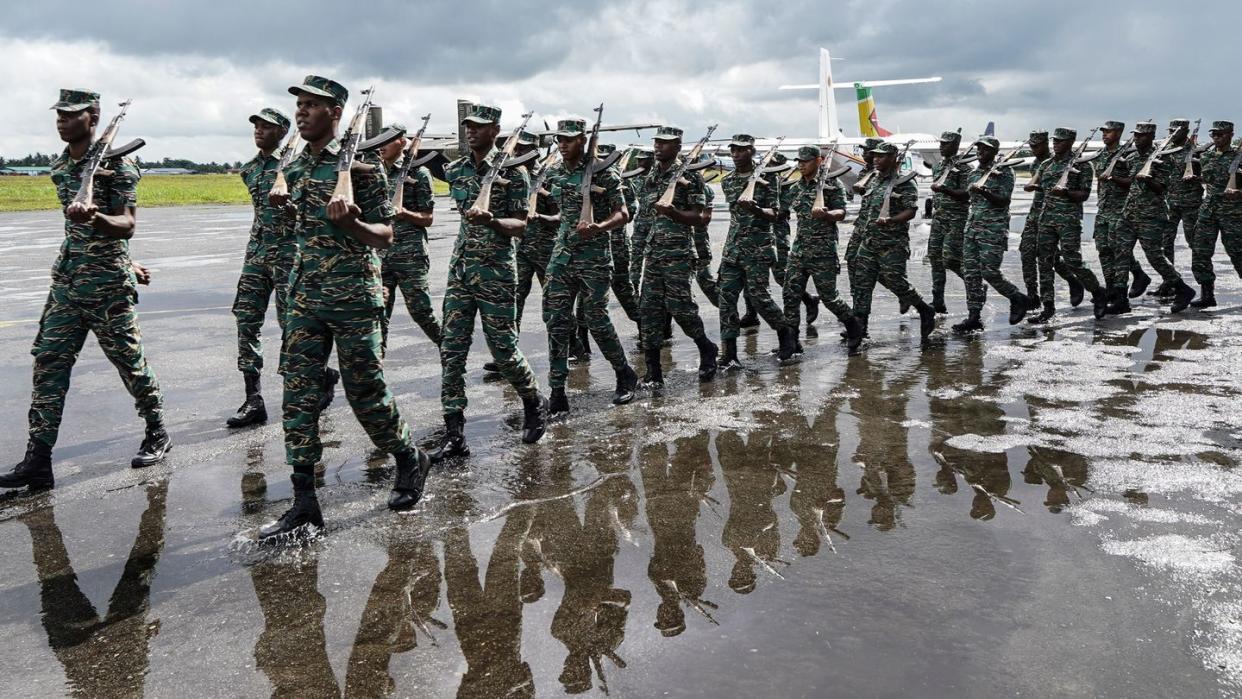
Venezuelan President Nicolás Maduro has something of a border dispute going on with the neighboring small country of Guyana. Namely, Maduro is asserting that Guyana’s Essequibo region—which constitutes over half of the country’s territory and generates $1 billion annually in offshore oil income—actually now counts as Venezuelan soil.
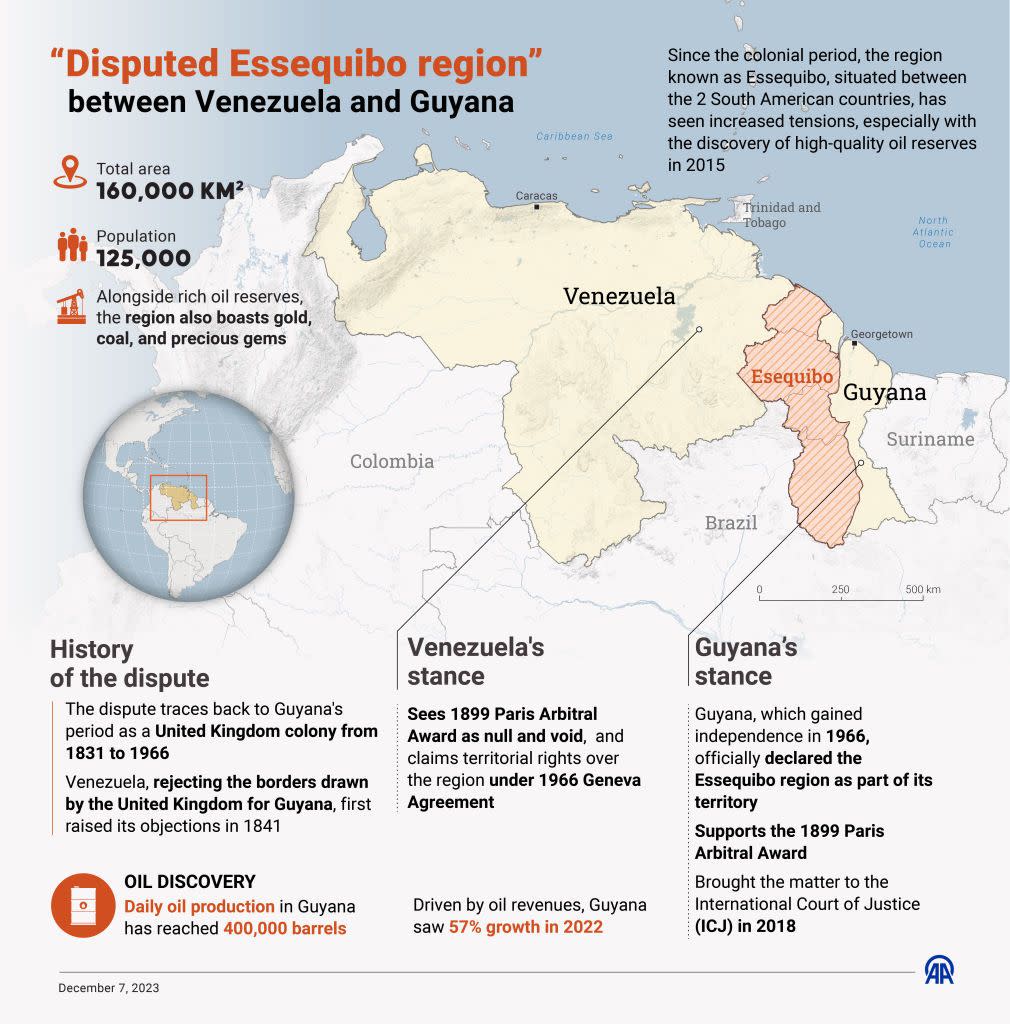
On December 3, Maduro held a referendum in which 95 percent of voters supposedly expressed support for annexing Essequibo. He has since announced that he is annexing the territory into a new Venezuelan state, that the region’s inhabitants are Venezuelan citizens, and that he will be offering oil rights for sale.
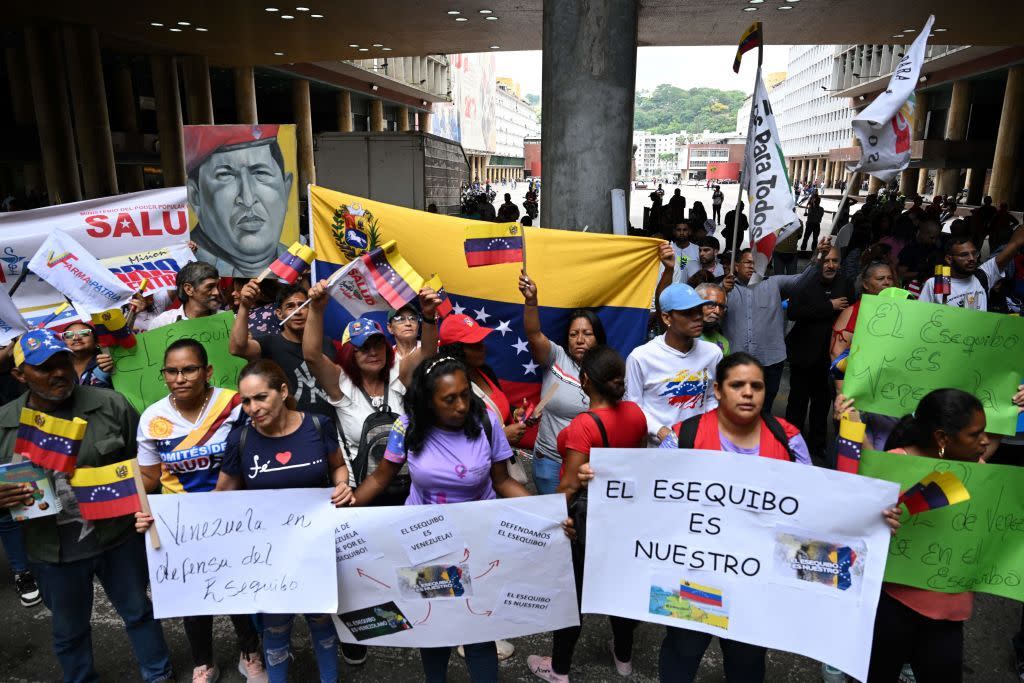
Most analysts believe that these moves don’t herald war, but are instead grandstanding by Maduro to consolidate political support in advance of the 2024 elections. Essequibo currently remains under Guyanese control. But what if Maduro truly sought to annex the region? Could Guyana’s armed forces actually resist a Venezuelan invasion?
Guyana Defense Force compared to the Bolivarian National Armed Forces of Venezuela
The Guyana Defense Force (GDF) totals only 3,400 active-duty personnel as of 2023. That includes air and naval components, each of which only maintains 200 personnel. Another 670 personnel are in volunteer reserve. The GDF is equipped for internal security, counter-narcotics, and border patrol rather than interstate conflict. It has never attempted a military coup, and has fought in only one armed conflict—the three-day Rupununi uprising in 1968 (backed by Venezuela), which was rapidly quashed with minimal casualties.

Though only minimally armed, according to The Military Balance 2023, it’s possible that some retired heavy weapons and vehicles remain in storage and could be restored to operational use in an emergency.
Venezuela’s military is known as the National Bolivarian Armed Forces of Venezuela (FANB) and numbers 123,000 active-duty personnel, supplemented by 220,000 paramilitaries and gendarmes.
The Venezuelan military spent the 20th century staging several coups—or defeating coups—and battling leftist insurgencies. In 1999, socialist Hugo Chavez was elected and realigned the oil-exporting country towards Russia, China, and Iran. Since then, Venezuela has bought large quantities of heavy weapons from those countries (especially Russia), perhaps fearing a conflict with the U.S. or a U.S.-backed uprising. This all makes it one of the most heavily armed countries in South America.
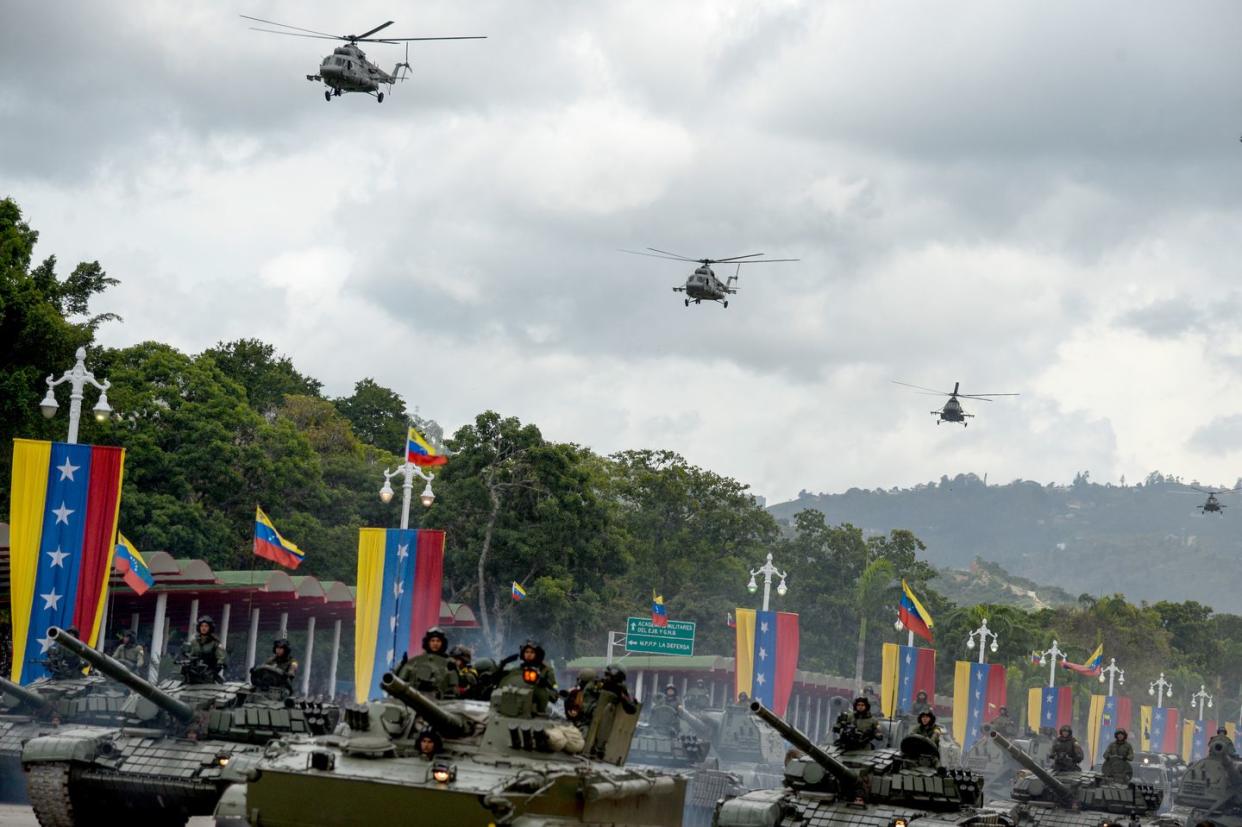
Infantry
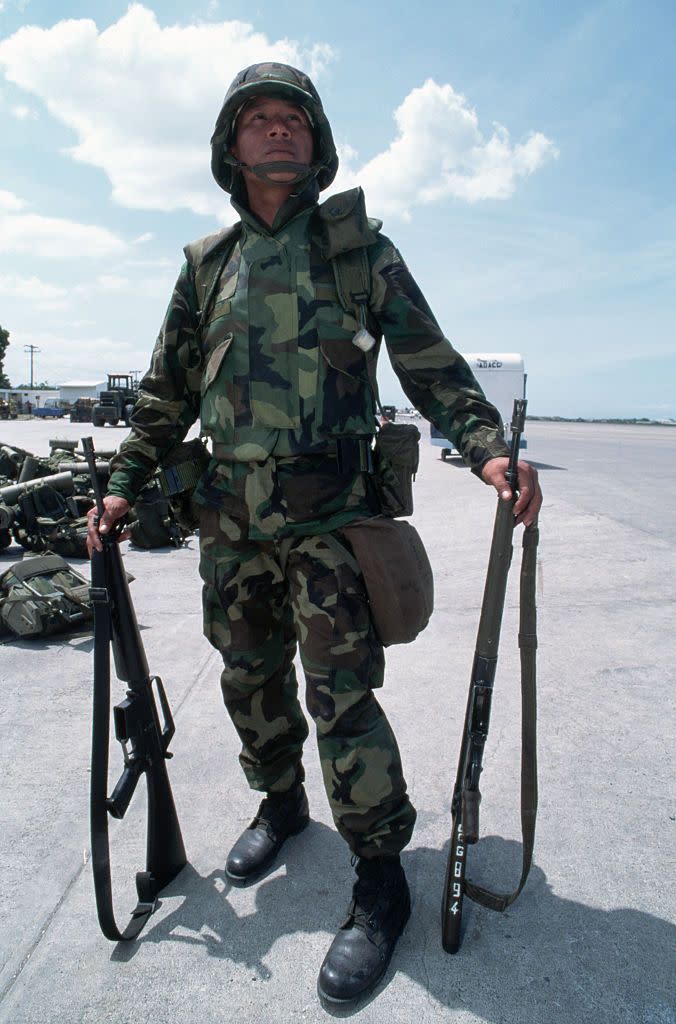
Guyana’s ground forces are built around its 1st and 3rd infantry battalions, its 2nd Battalion (a reserve volunteer unit), and a company-sized 31 Special Forces Squadron proficient in airborne, riverine, and jungle operations.
GDF small arms are mostly Cold War vintage weapons—rifles (AK-47, HK G3, FN FAL, Type 63, M1), carbines (AKM, Soviet SKS), and submachine guns (Sterling L2A3)—and some World War II-era arms like Sten submachine guns and Bren machine guns. Support weapons include RPG-7 anti-tank rockets and Belgian Minimi and MAG light machine guns, and perhaps a few heavy machine guns and 82-millimeter recoilless rifles.
Venezuela’s ground and marine infantry forces vastly outnumber Guyana’s, with well over 50 infantry battalions. And that’s not even counting armor and cavalry units.
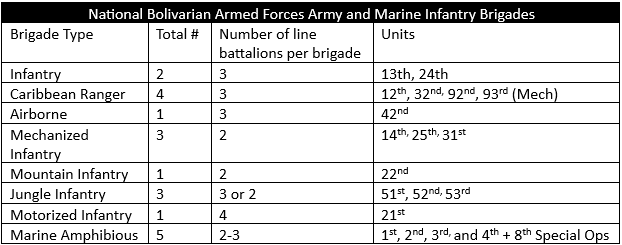
The standard issue rifles are license-built 7.62-millimeter AK-103s, but older U.S., Chinese, and Belgian rifles and machine guns remain as well. Squads are supported by anti-tank rockets (RPG-7, AT4, RBS-70).
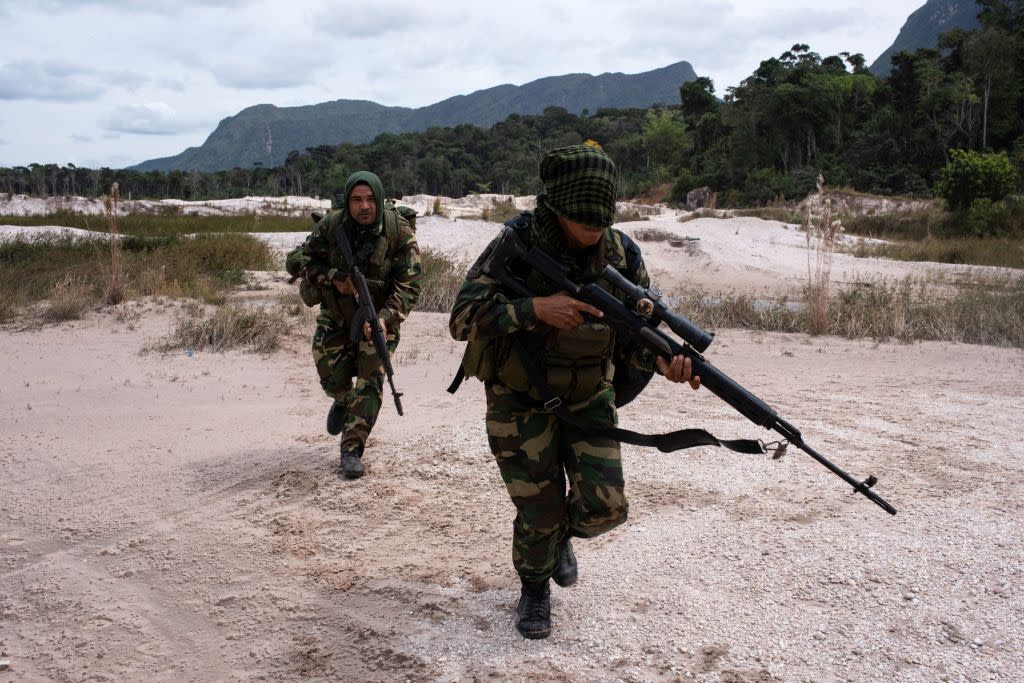
Admittedly, elements of Venezuela’s army may suffer from poor force proficiency. In 2021, a Venezuelan army unit was defeated in a battle by Colombian drug traffickers.
Armored vehicles
The GDF uses the Shorland S52 Armored Patrol Car—basically a Land Rover off-road vehicle fitted with a tiny.30-caliber machine gun turret, best known for use by Northern Irish police in skirmishes with the IRA.
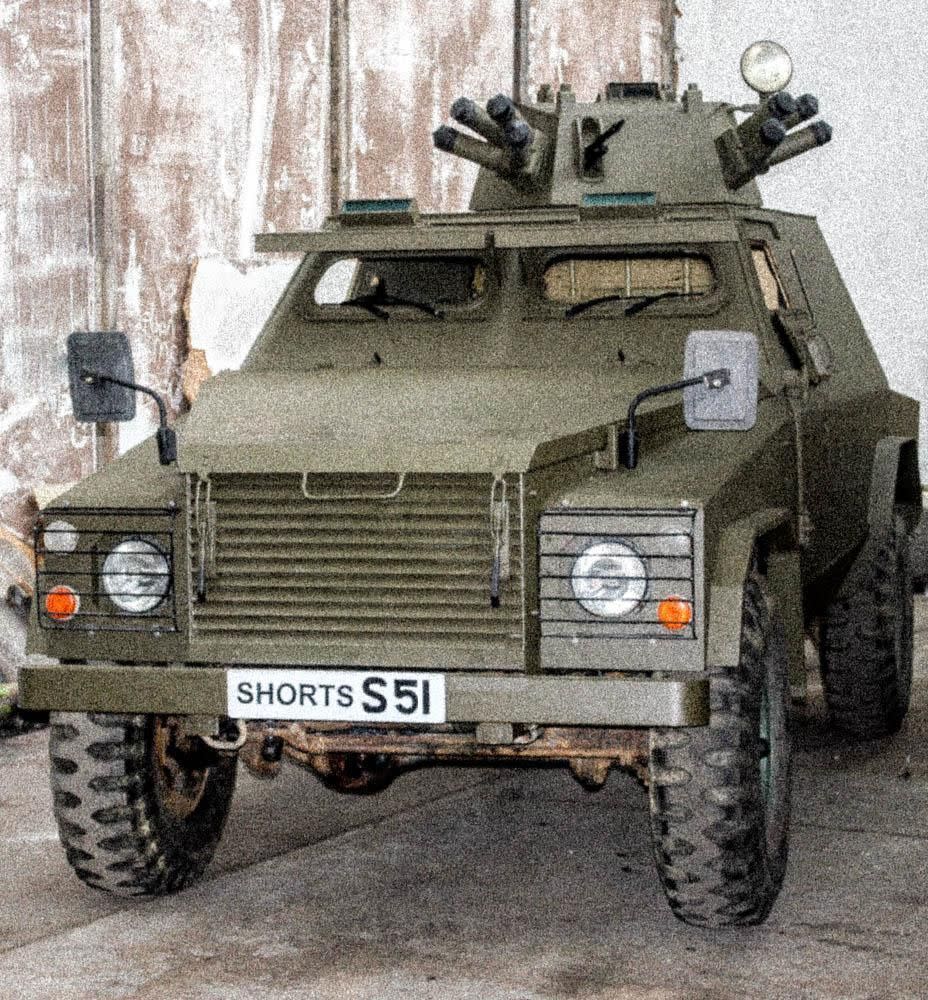
Guyana, at one point, operated up to 24 six-wheeled Brazilian EE-11 Urutu Mk III armored personnel carriers with.50-caliber machine guns and capacity for 11 passengers. It’s not clear whether any EE-11s remain operational.
The GDF’s most capable fighting vehicles are six EE-9 Cascavel (“Rattlesnake”) six-wheeled armored cars (as many as 18 were initially purchased). Based on the EE-11, the widely exported, 13-ton Cascavel has seen a lot of wars across the globe. Though thinly armored, it can knock out a tank on a good day with its 90-millimeter gun, supplemented by two FN machine guns.
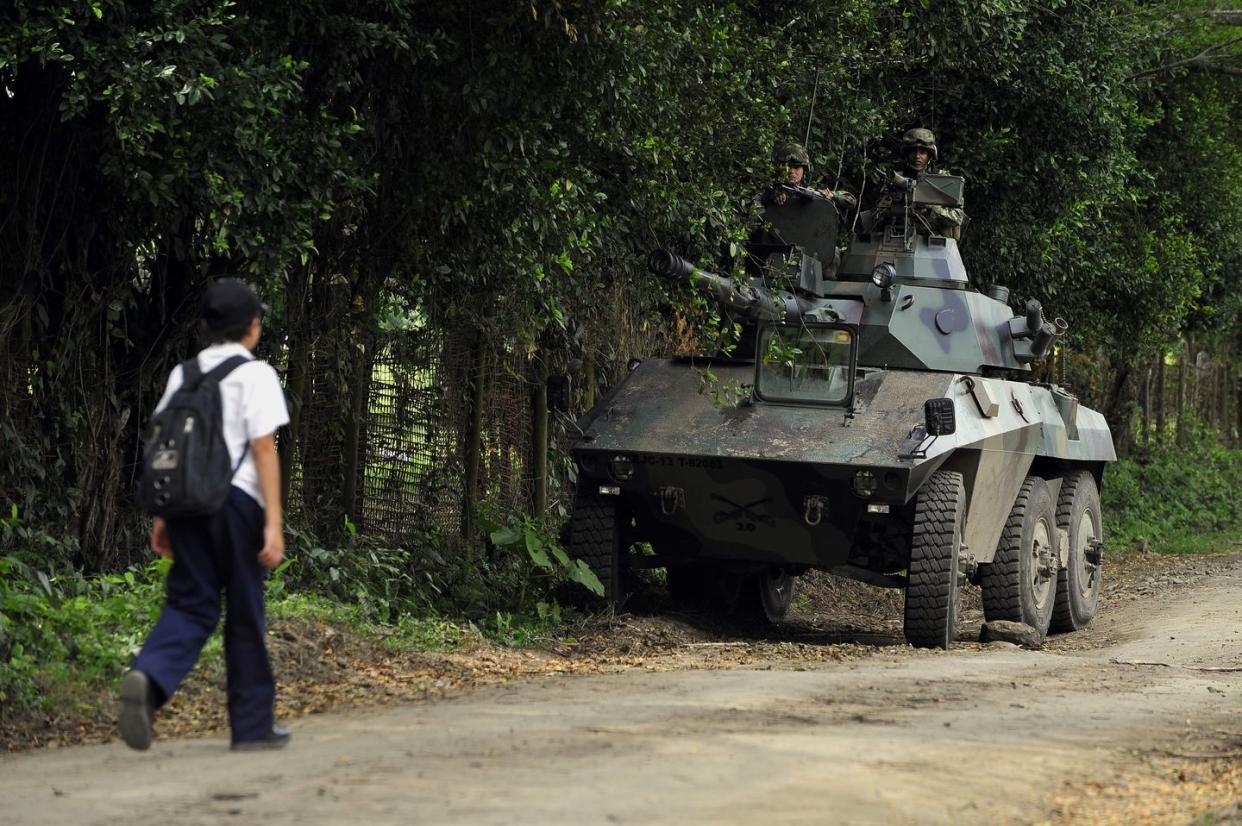
However, for every GDF Cascavel, Venezuela has nearly fifty tanks. Those include 92 beefy Russian T-72B1 main battle tanks, armed with 125-millimeter guns and girded with explosive reactive armor. Venezuela also has many more lightly armored tanks: 80 French-built AMX-30V2s modernized with new American engines and expanded fuel tanks, 31 AMX-13 light tanks, and 78 British Scorpion tank with 90-millimeter guns.
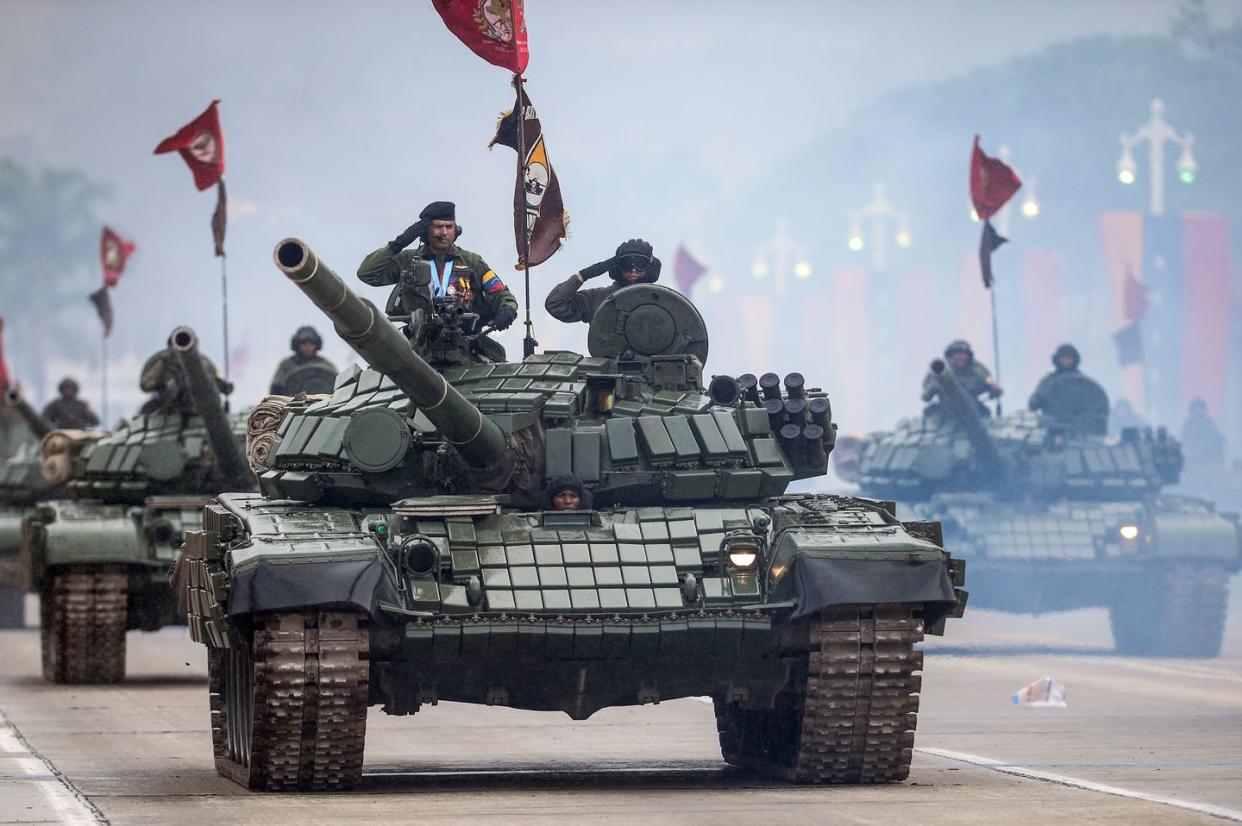
Venezuelan mechanized infantry can ride into battle with 123 heavily armed BMP-3 tracked fighting vehicles, all featuring gun turrets armed with both a 100-millimeter gun and 30-millimeter autocannon. The country can also mobilize 114 eight-wheeled BTR-80As with 30-millimeter cannons. These are supplemented by older and more lightly armed French and American APCs and armored cars (Commando V-150s, VCIs, and Dragoon 300s).
Venezuelan armor is organized as follows:
91st Cavalry Brigade, with three battalion-sized armored cavalry squadrons
41st Armor Brigade, with three armor battalions (T-72B1) and one armored infantry battalion (BMP-3)
11th Armor Brigade, with three armor battalions and one armored infantry battalion;
44th Light Armor Brigade, with two battalions of Scorpion-90 light tanks
one each of three armor battalions (not in armored brigades and attached to various infantry units)—armored (likely with tanks), armored cavalry, and armored infantry.
Artillery
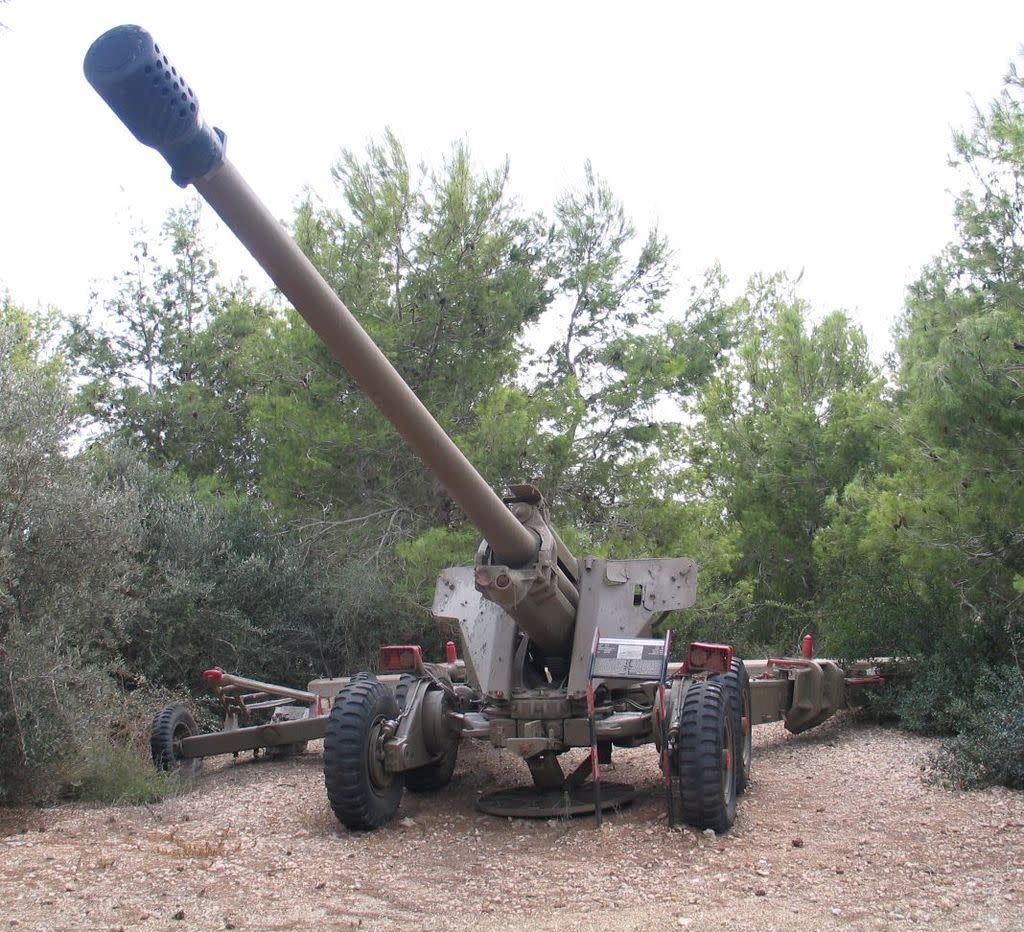
The GDF counts six Soviet-built M46 130-millimeter howitzers in its only artillery unit, the 21st Artillery Company. These are powerful, long-range weapons (max 17 miles using regular shells), but the GDF has just six, which is equivalent to one-third of a U.S.-style artillery battalion.
In the past, Guyana apparently also acquired six Type 63 107-millimeter 12-barrel multiple rocket launchers from China, a dozen shorter-range Soviet D-30 122-millimeter howitzers, and 76-millimeter guns. Perhaps some could be in storage.
By contrast, Venezuela’s army has nine full battalions of towed field artillery (105-millimeter and 155-millimeter from the U.S. and Italy) and four more in the Marine Corps. Additionally, it’s 43rd Artillery Brigade musters two battalions of huge Russian 2S19 Msta-S 152-millimeter self-propelled howitzers that boast a maximum range of 18 miles.
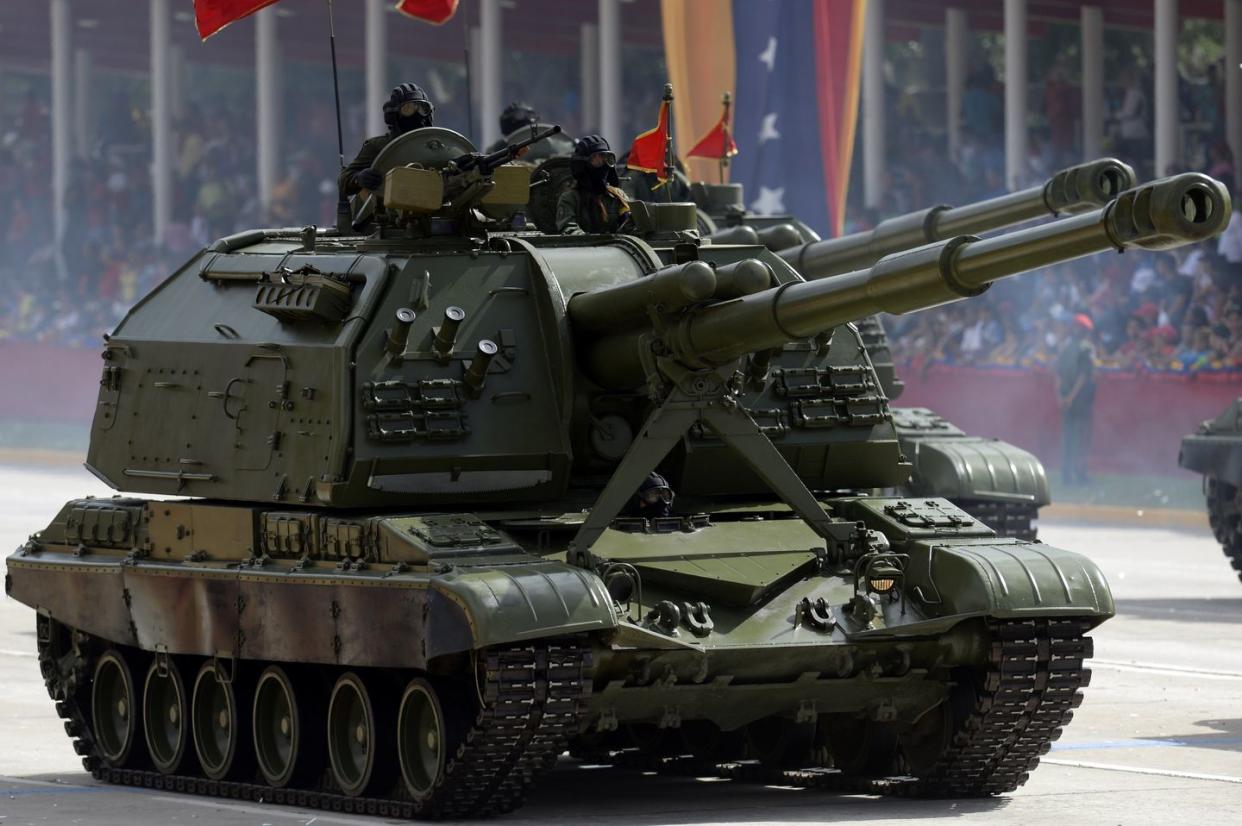
This brigade also has three battalions of multiple rocket launchers, 24 122-millimeter BM-21 Grad trucks, and twelve very powerful 300-millimeer BM-30 Smerch systems.
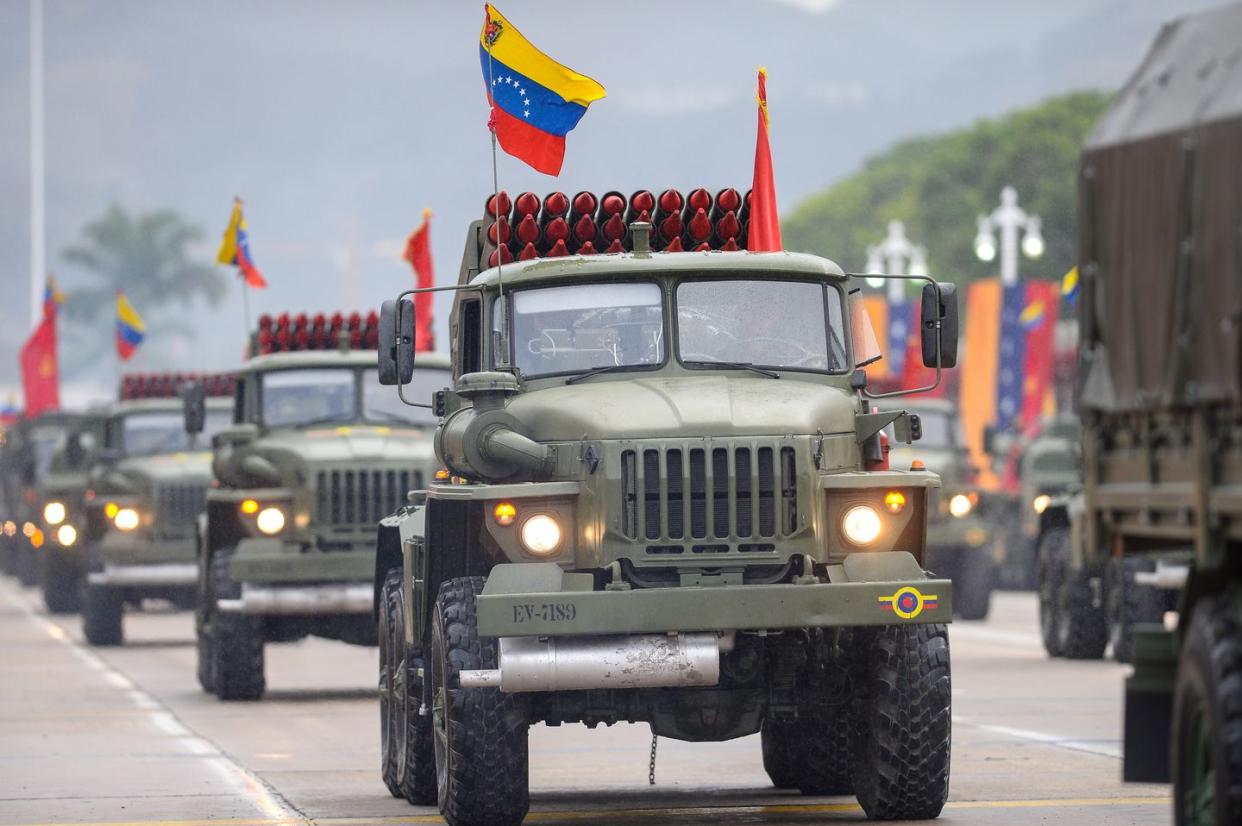
The imbalance in terms of mortars—lightweight, short-range artillery used for infantry support—is (relatively) less severe. The GDF reportedly has around 50 mortars total (a mix of 81-, 82-, and 120-millimeter systems). Venezuela is estimated to possess 296 mortars, including 13 relatively rare Russian 2S23 Nona-SVK self-propelled gun-mortars and 21 mortar-equipped Dragoon 300 vehicles.
Air power
The GDF has, at most, a limited low-altitude air defense capability. They possess eighteen Soviet Strela-2 (SA-7) portable short-range launchers with 100 missiles (if they haven't expired), and six 14.-5 millimeter heavy machine guns in the 21st Artillery Company.
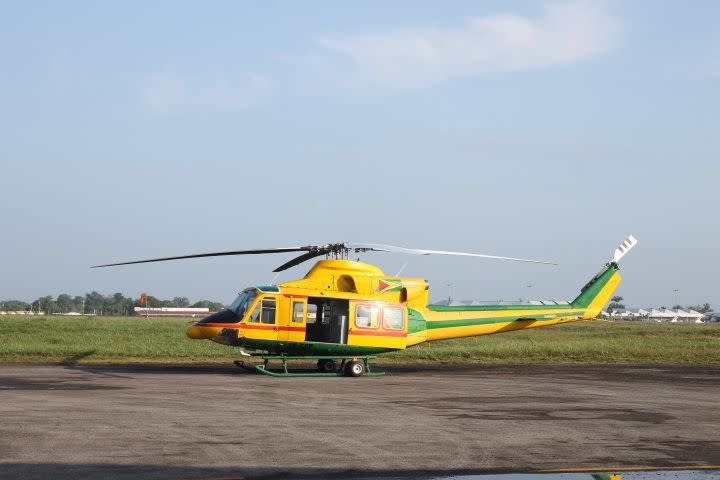
It’s Air Corps lacks combat aircraft, but does have three Bell 412 Twin Hueys and two Bell 206 utility helicopters—though one of the 412s was lost in an accident this December with five senior officers and two crew aboard while inspecting border defenses.
In terms of fixed-wing aircraft, Guyana has one single-engine Cessna 206, two boxy twin-engine Short Skyvans, two Britten-Norman Islander BN-2As, and a Chinese Y-12. The Air Corps role is defined as “tactical observation, mobility, casualty evacuation and support to the Ground Forces.”
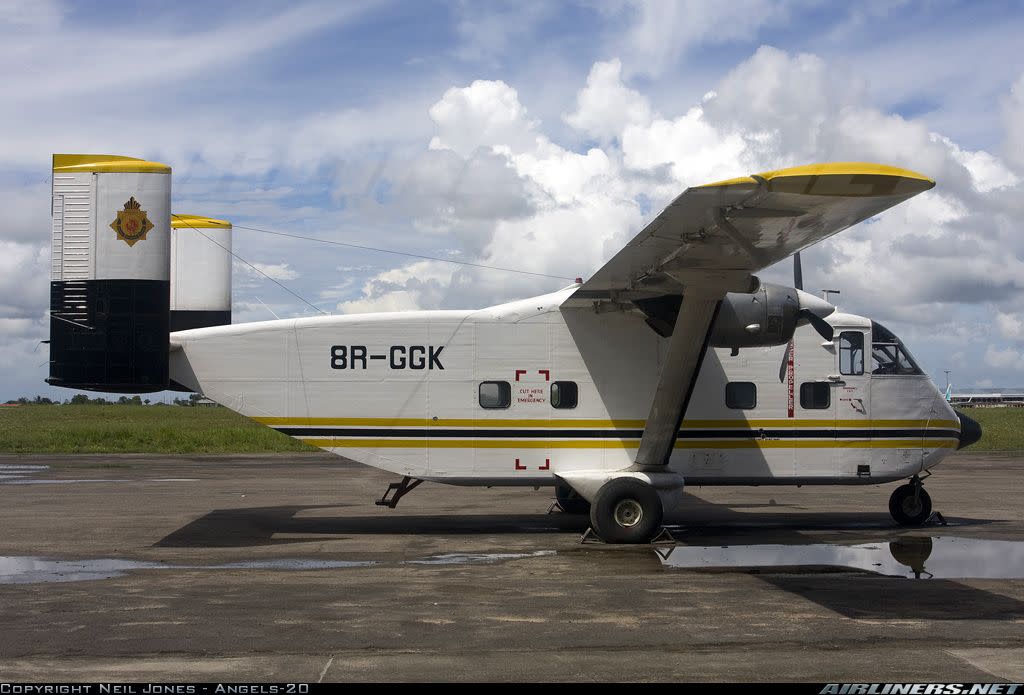
By contrast, the pride of the National Bolivarian Air Force is its collection of 22 Su-30MKV two-seat naval attack fighters, purchased from Russia for $2.2 billion and spread across three squadrons.
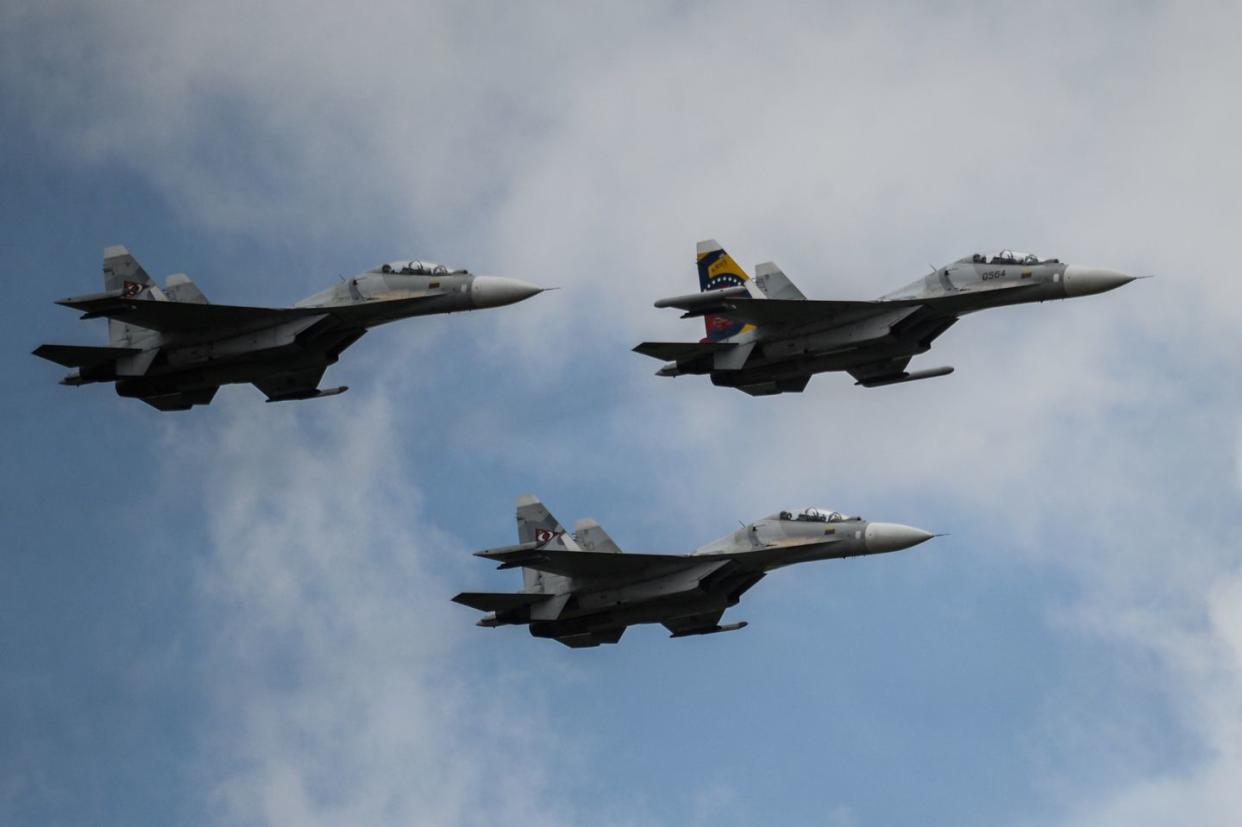
Venezuela’s 16th Fighter Group also maintains 18 F-16A/B Fighting Falcon single-engine fighters that it bought from the U.S. in the 1980s—at the time, perhaps the most advanced combat aircraft in South American service. These F-16s played an important role in defeating a coup staged by Hugo Chavez in November of 1992 by shooting down several OV-10 Broncos flown by Chavez’s supporters.
The Bolivarian Army also has nine Mi-35M Hind attack helicopters for close air support.
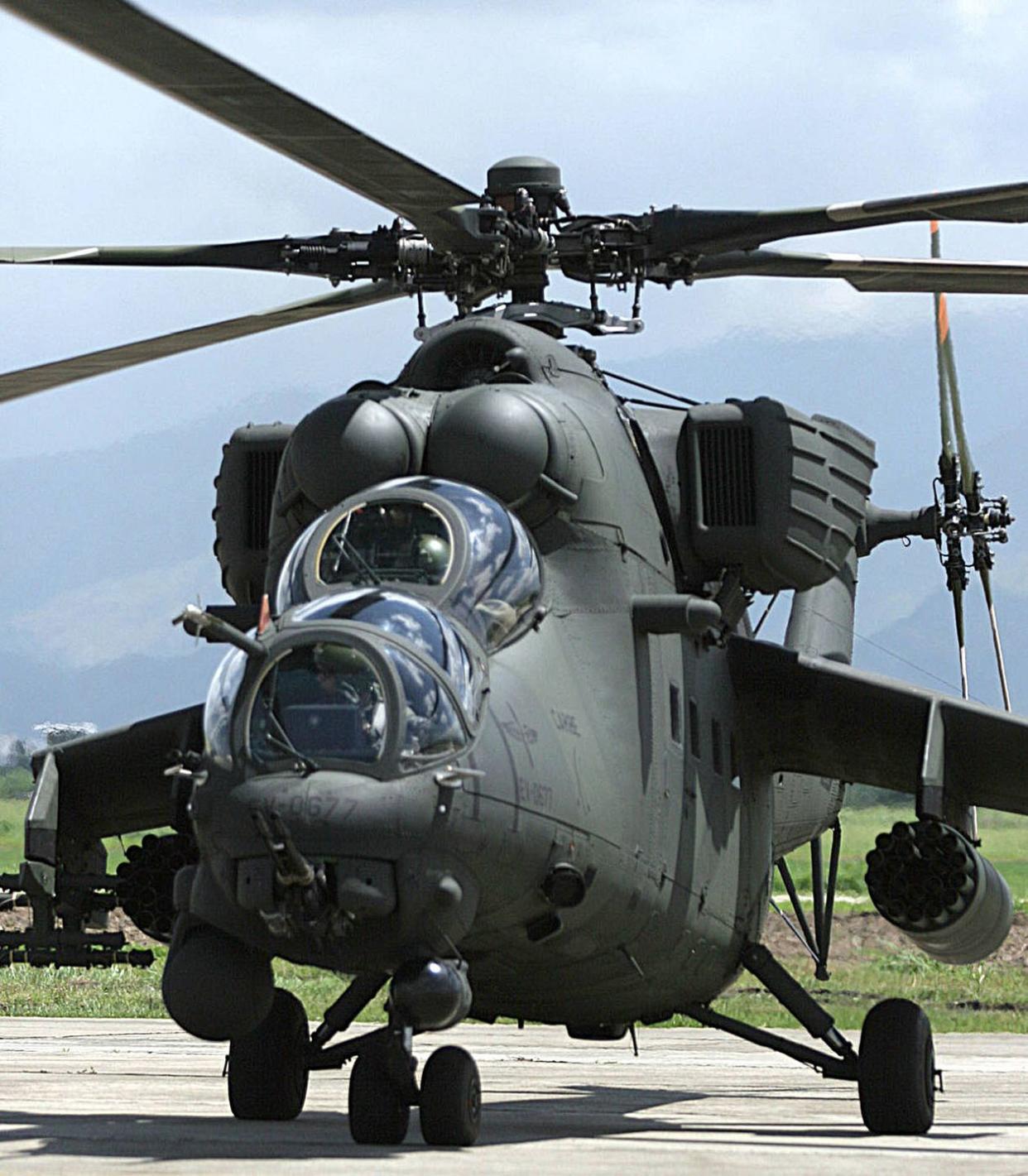
Venezuela also boasts significant transport capability, thanks to its eight Chinese-built Y-8F-200W four-engine cargo planes (based on the Soviet An-12 ‘Cub’). Each can carry 96 soldiers or 23 tons of cargo. Additionally, the Air Force and Army maintain 27 Russian Mi-17Vs, 12 Bell 412, and nine AS532 helicopters between them that can carry troops. Such aircraft could facilitate an airlanding operation involving Venezuela’s 42nd Parachute Brigade, which could attempt to circumvent the troubling ground-based logistics that a Guyana invasion would entail.
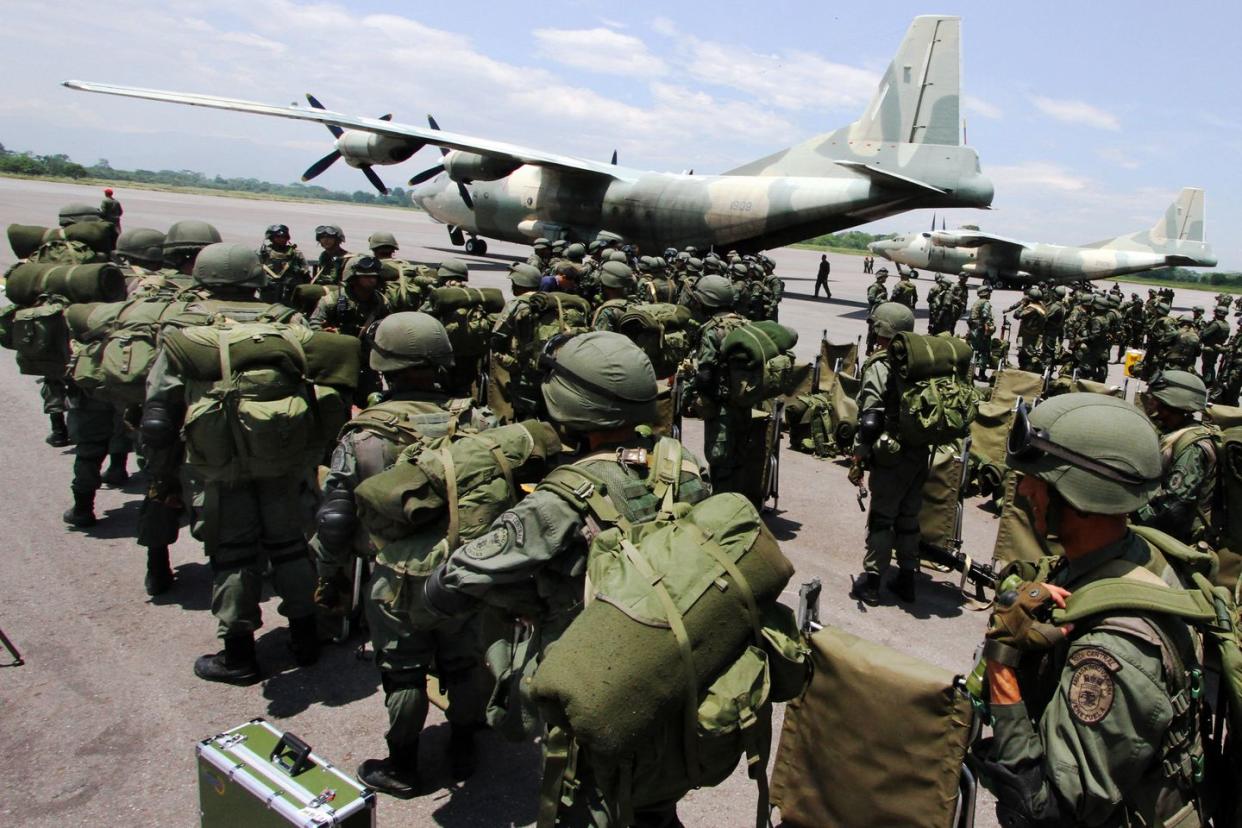
Venezuela has also purchased kits for twelve Mohajer-2 drones from Iran for $28 million, which it assembled locally under the designation CAVM Arpia (“Harpy”)—distinguished from the original design by their landing skids. This catapult-launched drone has a range of 31 miles and an endurance of 1.5 hours, and could provide tactical intelligence for invading ground forces.
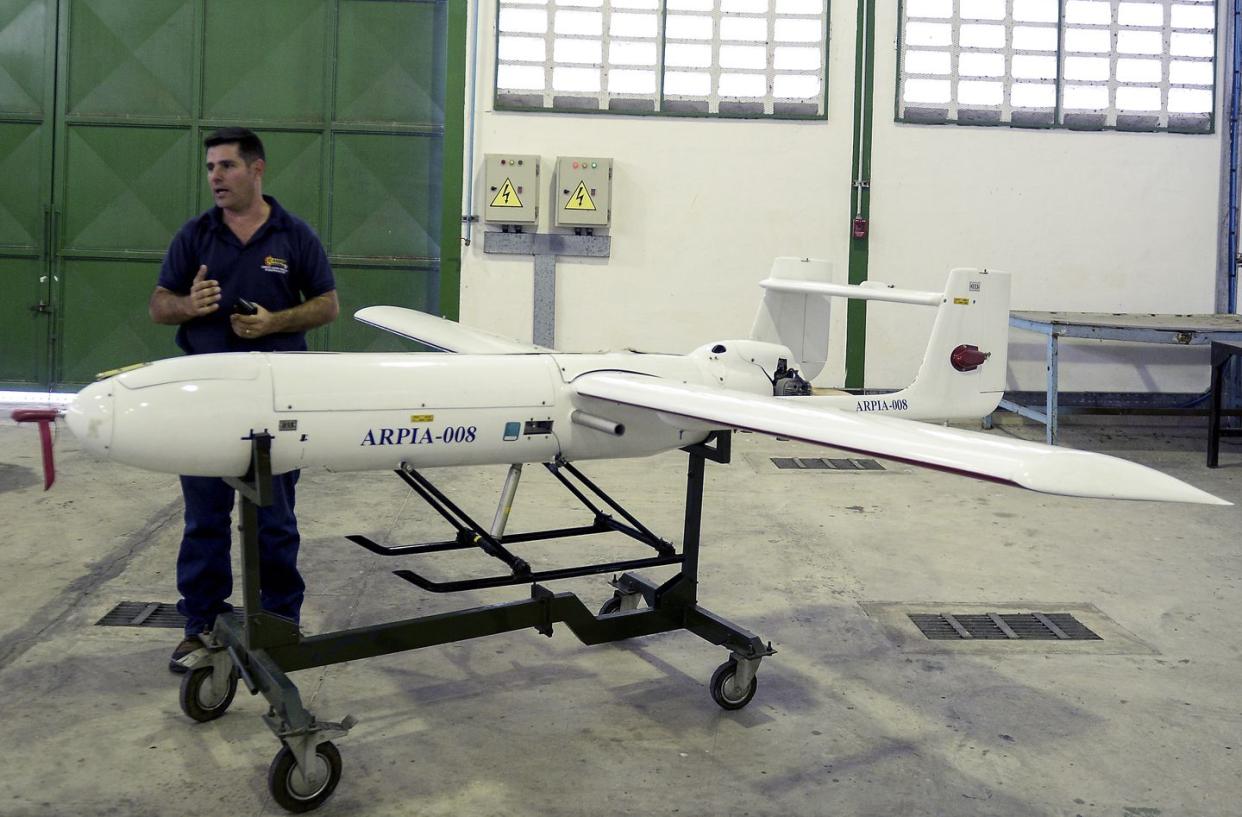
Venezuela’s Air Defense Command (CODAI) counts nearly 110 medium- and long-range surface-to-air missile systems (S-300VM, Buk-M2E and S-125 Pechora), and hundreds of shorter-range guns and missiles. But that’s a moot point when Guyana has no combat aircraft.
Sea power
The Guyana Coast Guard’s flagship was the 952-ton GDFS Essequibo—formerly the British Royal Navy’s Orwell, commissioned in 1985—armed with a few gun mounts and carrying a crew of 28 armed soldiers. It appears that the GDF considers the vessel “unserviceable,” and began looking to sell Essequibo in March.
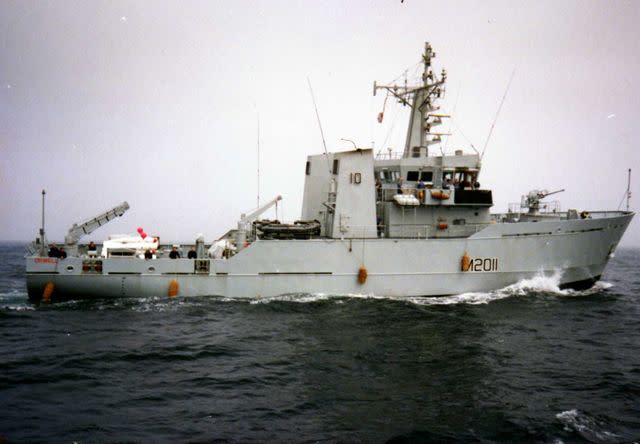
This vessel has been superseded by the curious-looking 115-foot GDFS Berbice, a Defiant 115-type welded aluminum patrol boat built by Louisana-based Metal Shark Boats. It usually requires a crew of 24, has a range of 2,500 miles, and is powered by two 1,600 C32 diesel engine achieving a max speed of 23 miles per hour or 14 while cruising. The Navy also has four former coast guard 44-foot patrol boats.
Venezuela’s largest warships aren’t in great condition. Two German-built Type 209 submarines may not be operational, despite upgrades to the sub Sabalo completed in 2011. Only one of its original six Italian-built Lupo-class frigates, Almirante Brion, is in active condition (sister ship Mariscal Sucre reported sunken into her harbor in 2022). The 2,760-ton frigate is armed with anti-submarine torpedoes, Otomat Mk2 anti-ship missiles (range 110 miles), Sea Sparrow air defense missiles, and 5-inch and 40-millimeter guns.
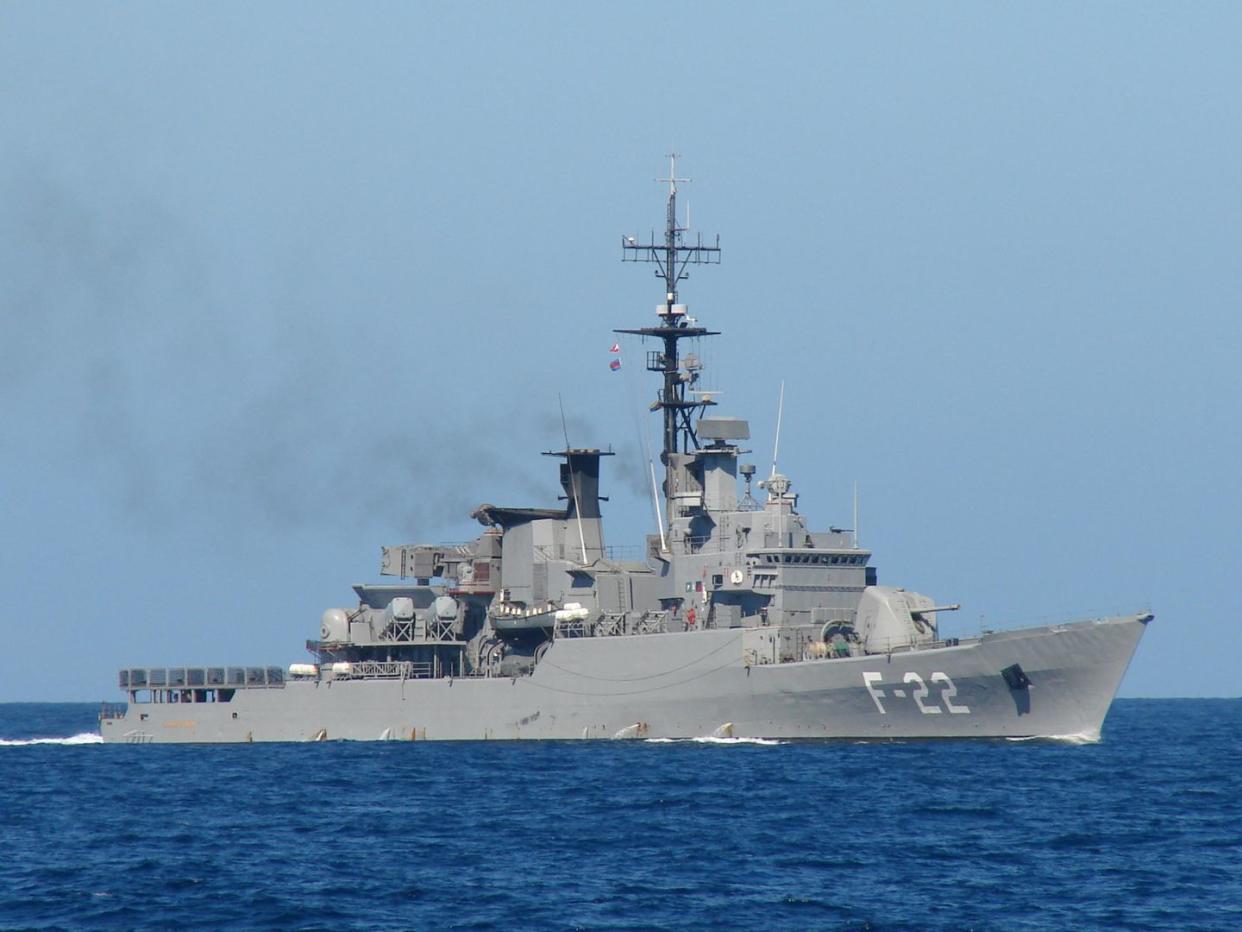
Around a dozen offshore patrol vessels and gunboats of Spanish and British construction are active, as are 19 patrol boats (built by the UK and armed with guns ranging from 20- to 76-millimeter caliber). Three also carry Otomat missiles.
Venezuela’s 11,000-strong Marine Corps also possess American AAV-7, Chinese VN1, and Chinese VN16 amphibious armored personnel carriers, as well as tank landing ships (LSTs) with which it could attempt an amphibious landing operation with armored vehicles. The service also has three riverine brigades, which could enable ingress into Esquibo via the Cuyuni and Waini rivers.
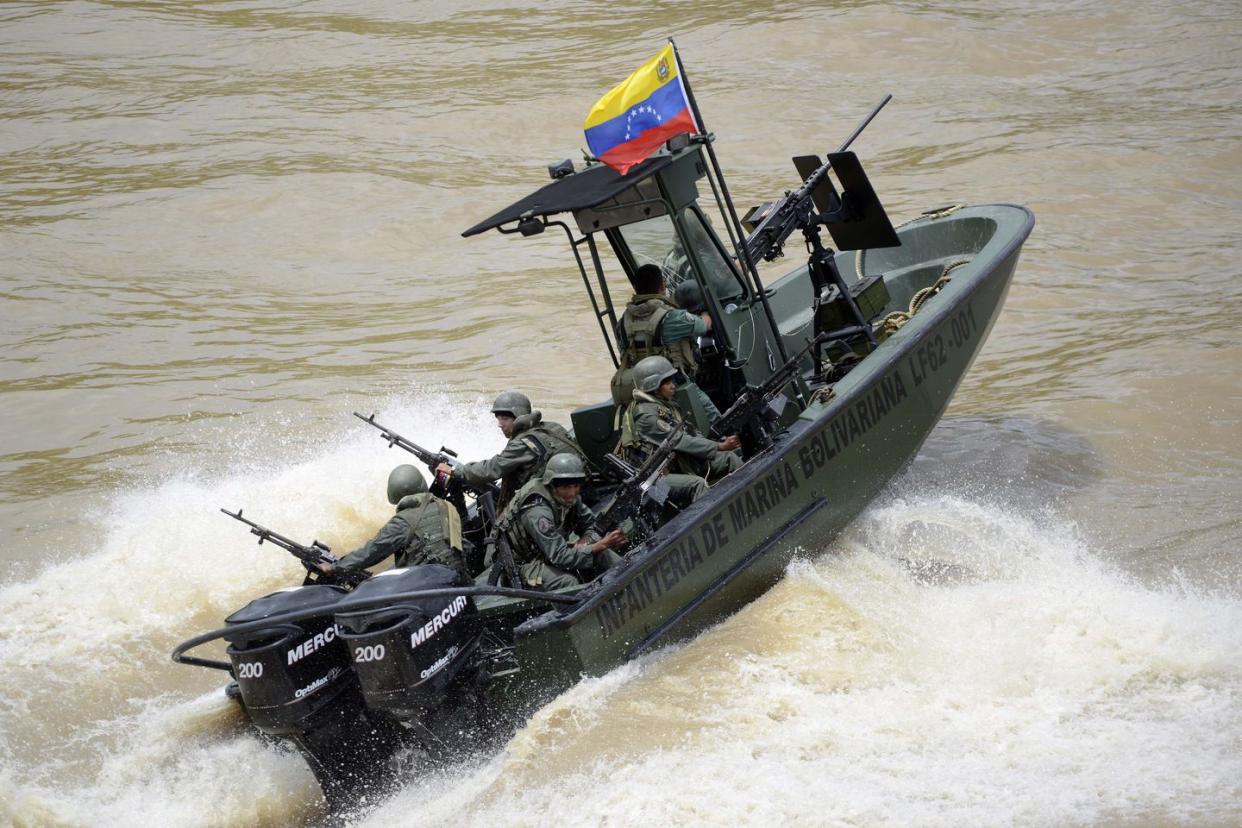
Guyana’s best defense: politics and geography
Small countries have difficult choices when considering whether to invest in defenses against many-times-larger neighbors. In the 1980s, oil-rich Kuwait acquired a capable military for its size with Chieftain and M84 tanks, Mirage F1 fighters, and I-Hawk surface-to-air missiles. When Saddam Hussein invaded in August of 1990, Kuwait inflicted hundreds of casualties and knocked out dozens of tanks and aircraft. But the country was still overrun in two days.
Guyana is smaller and poorer per capita than Kuwait, and can’t invest in capabilities to defend against a hostile state with 35 times its population. At best, were a Venezuelan invasion of Essequibo poorly executed (too few troops with awkward lines of communication, unprepared for a fight), the GDF’s few combat units could serve as a ‘trip-wire,’ buying time to raise sympathy in hopes of an international intervention like that which liberated Kuwait. But the reverse of that—an unopposed ‘steamroll’—is plausible, too.
Unlike Estonia, which neighbors Russia, Guyana doesn’t have the NATO alliance protecting it from aggression. Still, Guyana does have U.S. and Brazilian support, with the U.S. in particular harboring antipathy for Maduro. On December 7, the U.S. conducted aviation exercises with the GDF to emphasize its support for Guyana.
Though the U.S. is currently preoccupied managing conflicts in the Middle East and Ukraine, Maduro can’t be sure how aggressively the U.S. might retaliate if Venezuela actually seized Guyanese territory.
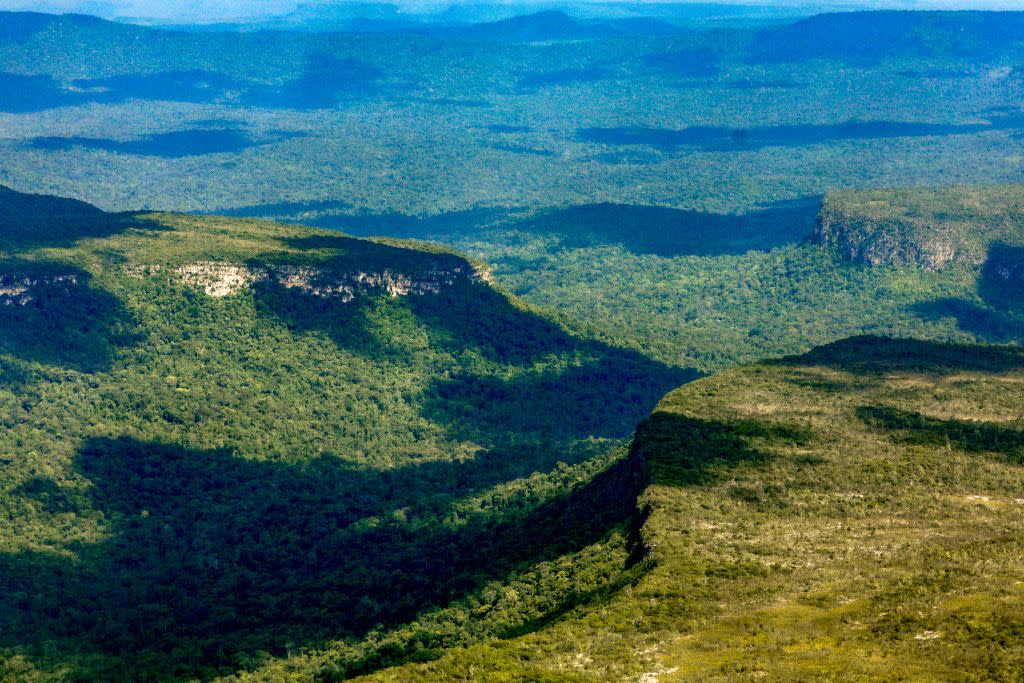
Furthermore, Essequibo is a sprawling jungle territory deficient in road infrastructure, making it difficult to invade—particularly with armored vehicles or artillery. Venezuelan forces only have access to Guyana’s northwest border, but the main road into Essequibo runs through Brazilian territory. And on November 29, Brazil reinforced its border forces in the region to forestall traversal by Venezuelan forces.
A botched invasion could fatally destabilize Maduro’s regime, as happened to the Argentine junta when it’s invasion of the Falkland War was defeated in 1982. It’s more likely that Maduro seeks to politically profit from the rancor over Essequibo. The U.S. recently eased oil sanctions on Venezuela in exchange for holding competitive elections in 2024.
A quick history of the Venezuela-Guyana territorial dispute
The Guyanese are culturally distinct from Venezuelans, speaking primarily Creole and English rather than Spanish, and the majority are descended from peoples of Indian, African, and indigenous descent.
It’s true that Venezuelan claims to the Essequibo territory in Guyana date back at least two centuries. But it’s also clear that Maduro wouldn’t be pressing the claims if Guyana hadn’t discovered 8 billion barrels of oil reserves between 2015 and 2021—enough to increase its GDP by 60%.
Essequibo was colonized by Dutch settlers in 1616, and subsequently seized by the British Empire in the 18th century—a period during which it was amalgamated with neighboring Berbice and Demerara. When Venezuela gained independence in 1832, it asserted that Spain had actually claimed the territories west of the Essequibo river, and that they should therefore go to Venezuela.
An international arbitration ruled against Venezuela’s claim in 1899, but some allege that it was rigged, and the dispute flared again after Guyana became independent in 1966. In a reverse of the current situation, Cold War Guyana was socialist-leaning (and socialist-armed), while Venezuela’s government was backed by the U.S.
In the early 2000s, Hugo Chavez stated that the dispute with Guyana was over. A Guyanese defense paper from 2009 reveals that the perception of the threat of Venezuelan invasion was now minimal. But after a major oil discovery off Essequibo’s shoreline in 2015 (which Guyana licensed to ExxonMobil), Maduro decided that Venezuela still had a bone to pick over the region after all.
You Might Also Like
